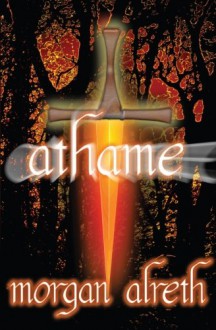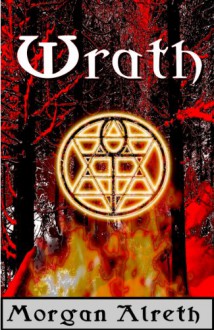

Im Frühling 2016 wurde bekannt, dass Kendare Blake die Filmrechte von „Anna Dressed in Blood“ an Stephenie Meyer verkaufte. Die Produktionsfirma der „Twilight“-Autorin legte sofort los, benannte Regisseurin, Drehbuchautorin und einen Teil des Casts. Seitdem wurde es still um das Projekt. Vielleicht wurde „Anna Dressed in Blood“ einfach nur hinter Meyers Serien-Realisierung ihres Romans „The Chemist“ zurückgestellt – vielleicht wurde die Verfilmung aber auch gecancelt. Wir haben ja schon oft erlebt, dass solche Projekte im Sande verlaufen. Für mich hat der Film allerdings ohnehin keine Priorität, obwohl ich mir vorstellen könnte, ihn mir anzusehen. Die Fortsetzung „Girl of Nightmares“ war definitiv wichtiger.
Cas, Carmel und Thomas verdanken ihre Leben einem Geist: Anna Korlov, besser bekannt als Anna Dressed in Blood. Sie opferte sich, um die drei zu schützen und zog den schrecklichen Obeahman hinab in die Hölle. Cas weiß, dass Carmel und Thomas die beängstigenden Ereignisse dieser Nacht hinter sich lassen möchten, doch er kann nicht vergessen, was Anna für sie getan hat. Er kann nicht aufhören, an sie zu denken. Er träumt oft von ihr – blutige, unheimliche Albträume. Als er beginnt, Anna auch tagsüber zu sehen, zweifelt er an seinem Verstand. Die Visionen sind verstörend; sie wirkt gequält, gehetzt und verzweifelt. Ist es möglich, dass es sich gar nicht um Halluzinationen handelt? Versucht Anna, um Hilfe zu rufen? Sofort ist Cas fest entschlossen, Anna zu retten. Die einzigen, die ihm einen Weg in die Hölle weisen können, sind die Mitglieder des mysteriösen Ordens, der sein Athame erschuf. Diese verfolgen allerdings ganz eigene Pläne, für die Cas nicht unbedingt überleben muss. Und in der Hölle wartet schon der Obeahman auf ihn…
Überflüssig. Hätte man auch sein lassen können. Ich hatte keine hohen Erwartungen an „Girl of Nightmares“, weil mich bereits der erste Band „Anna Dressed in Blood“ nicht vom Hocker riss. Aber ich habe schon angenommen, dass sich einige Fragen, die der Vorgänger offengelassen hatte, klären würden. Beispielsweise, welch merkwürdige Beziehung Cas‘ Familie zu dem Athame hat und ob sie die einzigen Jäger auf der Welt sind. Gibt es nur Geister und Hexen, oder auch Monster? Vampire, Werwölfe, Banshees? Und wie kann es eigentlich sein, dass Cas‘ Mutter einverstanden ist, ihren minderjährigen Sohn auf Geisterjagd zu schicken und ihn ihr Leben bestimmen zu lassen? „Girl of Nightmares“ beantwortet keine dieser Fragen zufriedenstellend. Es fügt der Geschichte nichts hinzu, was ich hätte wissen müssen, beleuchtet keine Hintergründe und fühlte sich irritierend losgelöst vom ersten Band an. Obwohl die Handlung an „Anna Dressed in Blood“ anknüpft, hatte ich den Eindruck, Kendare Blake hätte einfach nur eine weitere Geschichte auf die erste gestapelt, statt erläuternde Verbindungen zwischen den Bänden herzustellen, die das Verständnis erweitern. Vielleicht wollte sie das gar nicht, vielleicht wollte sie zwei weitgehend eigenständige Geschichten erzählen, doch ich hatte mit unter der Fortsetzung eben etwas anderes vorgestellt. Unsere Prioritäten liegen offenbar recht weit auseinander. Während ich Hintergrundwissen als deutlich wichtiger als Action einstufe, scheint Blake handfeste Szenen zu lieben und schreibt lieber übernatürliche Prügeleien, anstatt Details in einen Kontext zu setzen. Trotz dessen bemühte sie sich, die Horroraspekte der Fortsetzung eher aus der psychischen, als aus der physischen Perspektive anzugehen. Es gelang ihr, eine ansatzweise gruselige Atmosphäre heraufzubeschwören, die meine Vorstellungkraft allerdings nicht auf eine Achterbahnfahrt des Grauens schickte. Für meinen Geschmack ging sie definitiv zu zaghaft vor. Als Cas beginnt, Visionen von Anna zu haben, besucht sie ihn eines Nachts. Ein gequälter, gefolterter Geist steht plötzlich an seinem Bett. Doch statt das unheimliche Potential der Situation voll auszuspielen, lässt Kendare Blake die beiden reden. Sie reden! Schnarch. Ich fand „Girl of Nightmares“ aufgrund solcher Szenen ziemlich langweilig und war enttäuscht, dass sich meine Schwierigkeiten mit Cas, die ich im ersten Band kritisiert hatte, leider nicht legten. Ich halte ihn noch immer für einen arroganten Kotzbrocken. Es ist ja ganz toll, dass er mittlerweile erkannte, dass Freunde eine praktische Sache sind, aber sein Mangel an Demut stieß mir weiterhin sauer auf. Er interessiert sich nur für Anna, die Schicksale anderer Geister sind ihm so gut wie gleichgültig. Außerdem verstehe ich einfach nicht, was an ihm so besonders ist. Er hat keine speziellen Kräfte, sein einziges Ass im Ärmel ist das Athame, das jeder andere Mensch ebenfalls führen könnte. Was qualifiziert ausgerechnet ihn als Geisterjäger? Kendare Blake schaffte es nicht, mich von seinem Sonderstatus zu überzeugen, weshalb ich das gesamte Buch in Frage stellte. Nicht einmal der finale Showdown, für den die Autorin wieder den Obeahman als Endgegner hervorzerrte, vermochte die Lektüre für mich zu retten. Das offene Ende war schlicht unbefriedigend, weil es die Geschichte nicht wirklich abschließt. Wir erfahren nicht, was aus Cas und seinem Familienauftrag wird. Kendare Blake dreht sich einfach um und geht.
Wenn ihr „Girl of Nightmares“ mit der Erwartungshaltung lest, lediglich ein weiteres Abenteuer mit dem Geisterjäger Cas zu erleben zu wollen, kann euch diese Fortsetzung sicher glücklich stimmen. Erwartet ihr hingegen Erklärungen, wie es bei mir der Fall war, wird euch das Buch enttäuschen. Die Handlung bietet zwar durchaus neue Informationen, aber ein Erkenntniszuwachs blieb aus. Es fühlte sich an, als hätte Kendare Blake Neues begonnen, bevor das Alte abgearbeitet war, was dadurch unter den Tisch fallen musste. Ich mochte diese Herangehensweise nicht. Daher verabschiede ich mich jetzt kurz, schmerzlos und unzeremoniell von der „Anna“-Dilogie und widme mich wieder dem Original. Supernatural, ich komme.

 Log in with Facebook
Log in with Facebook 







